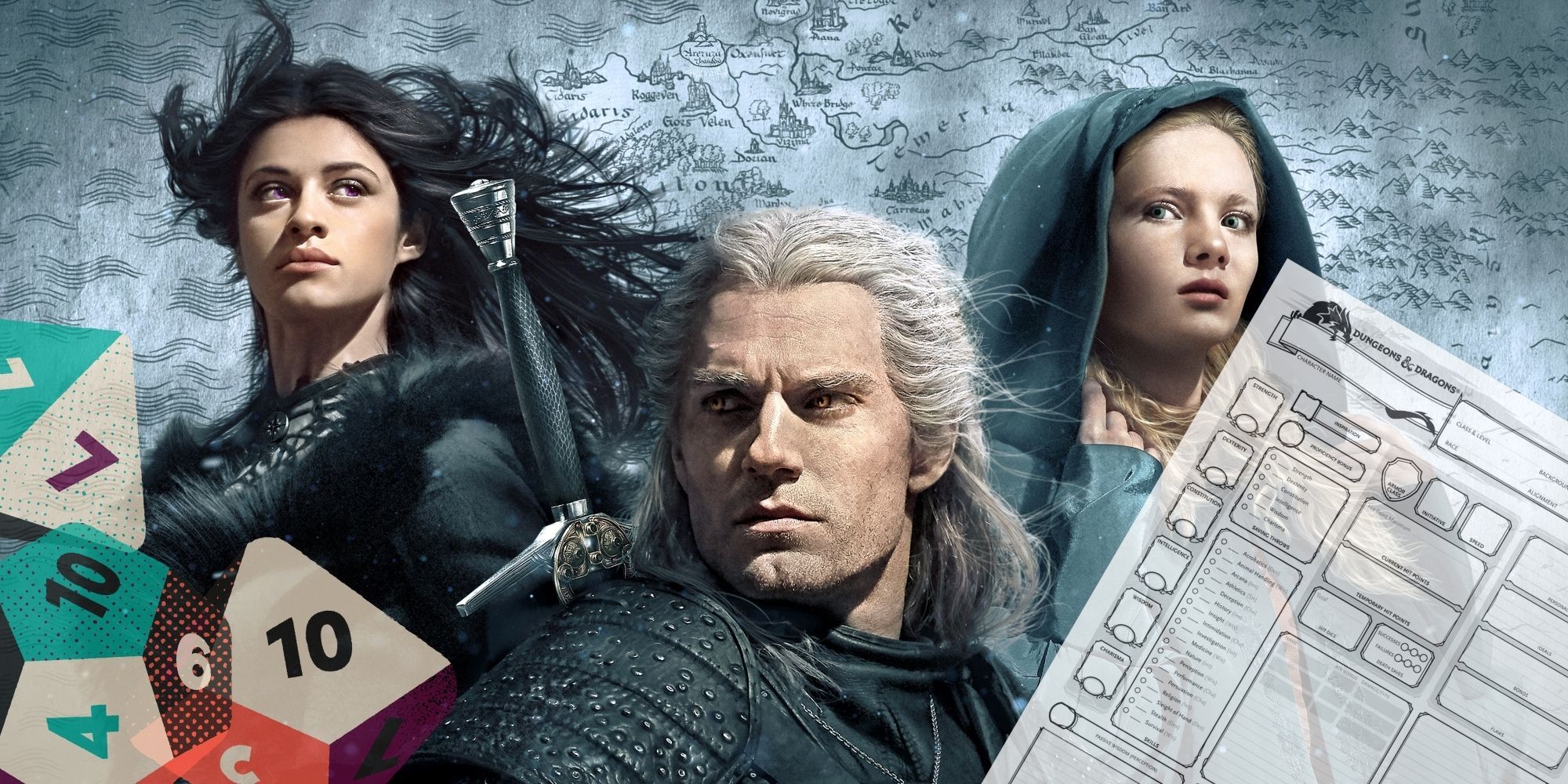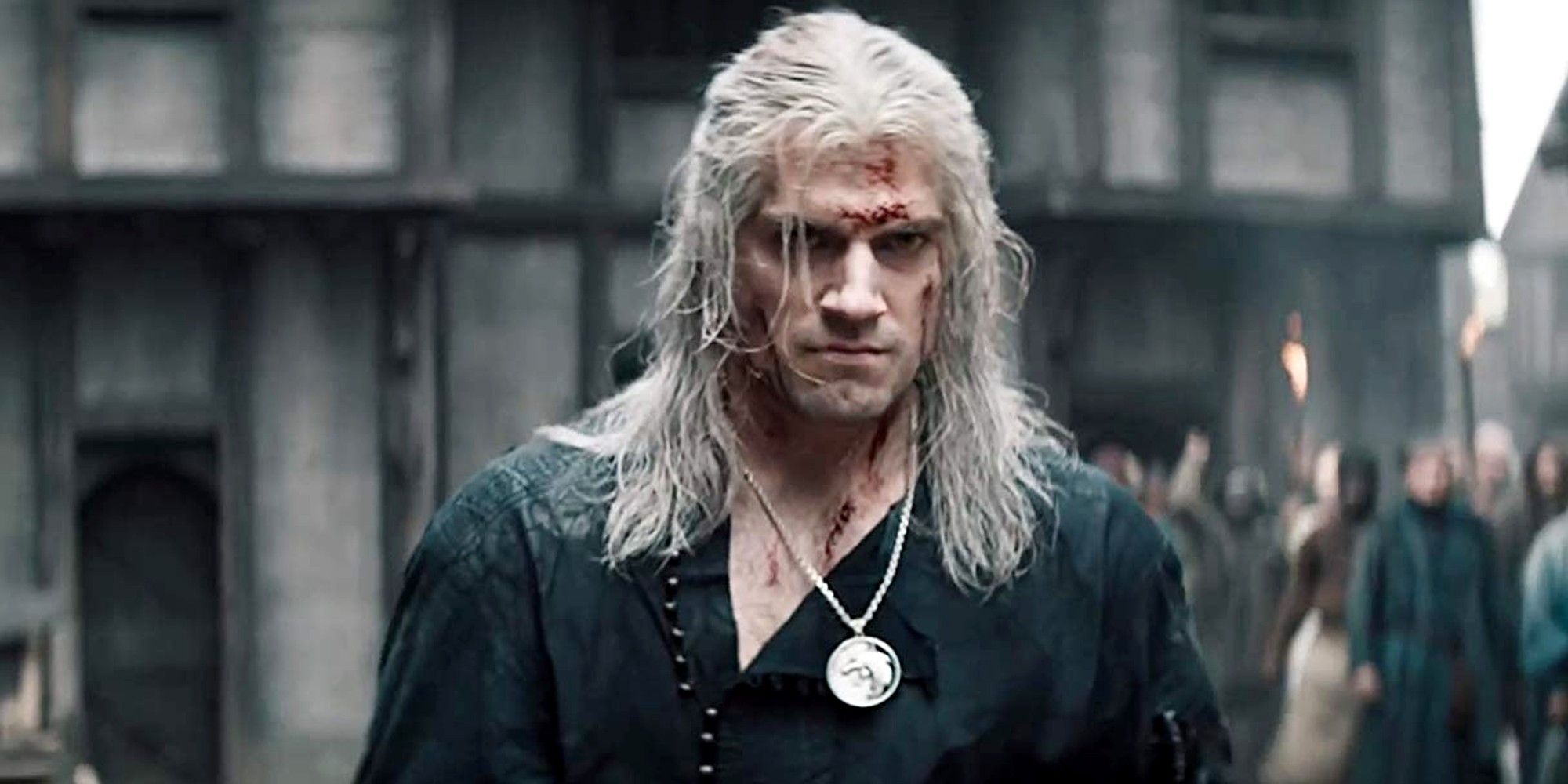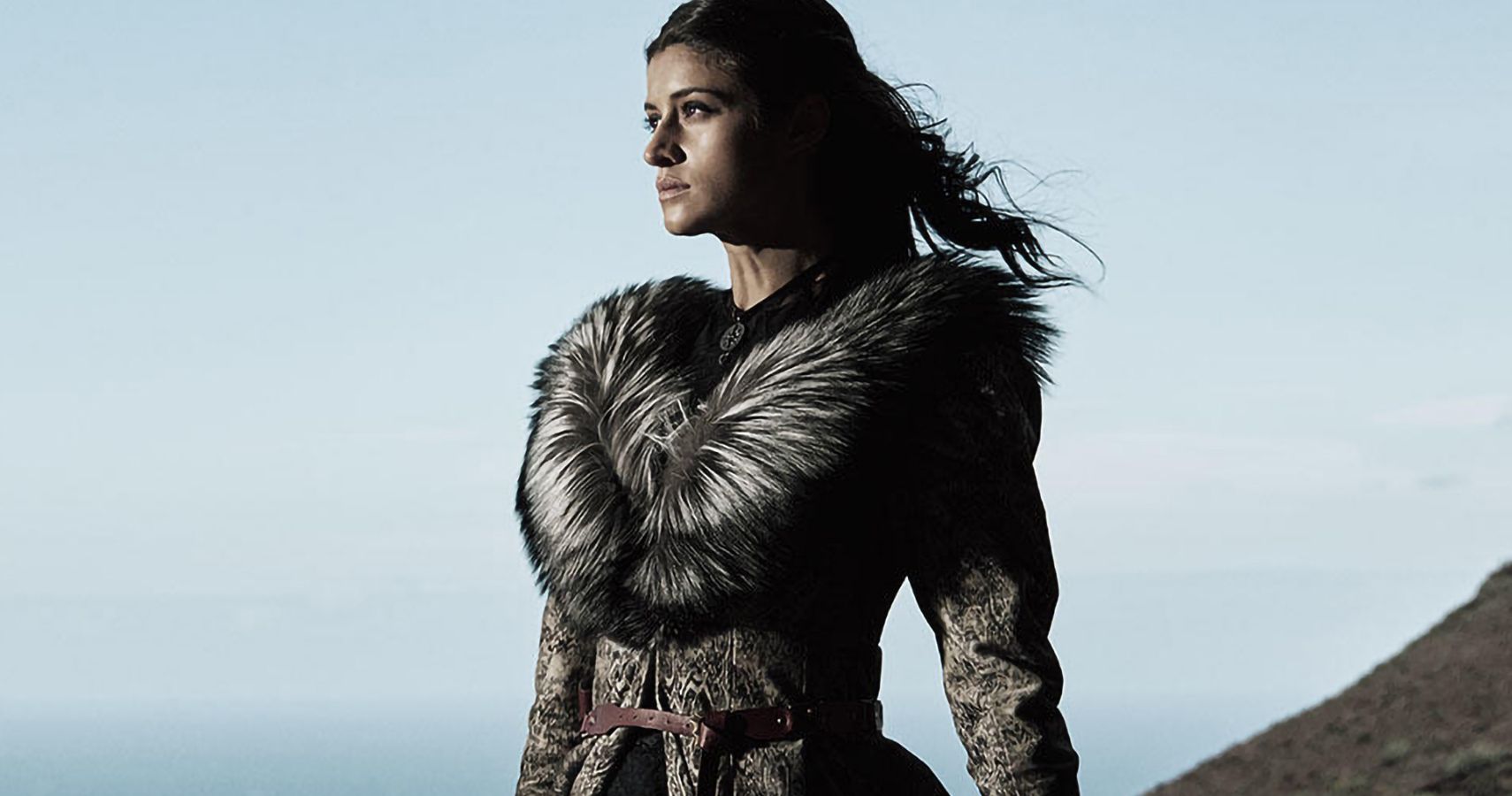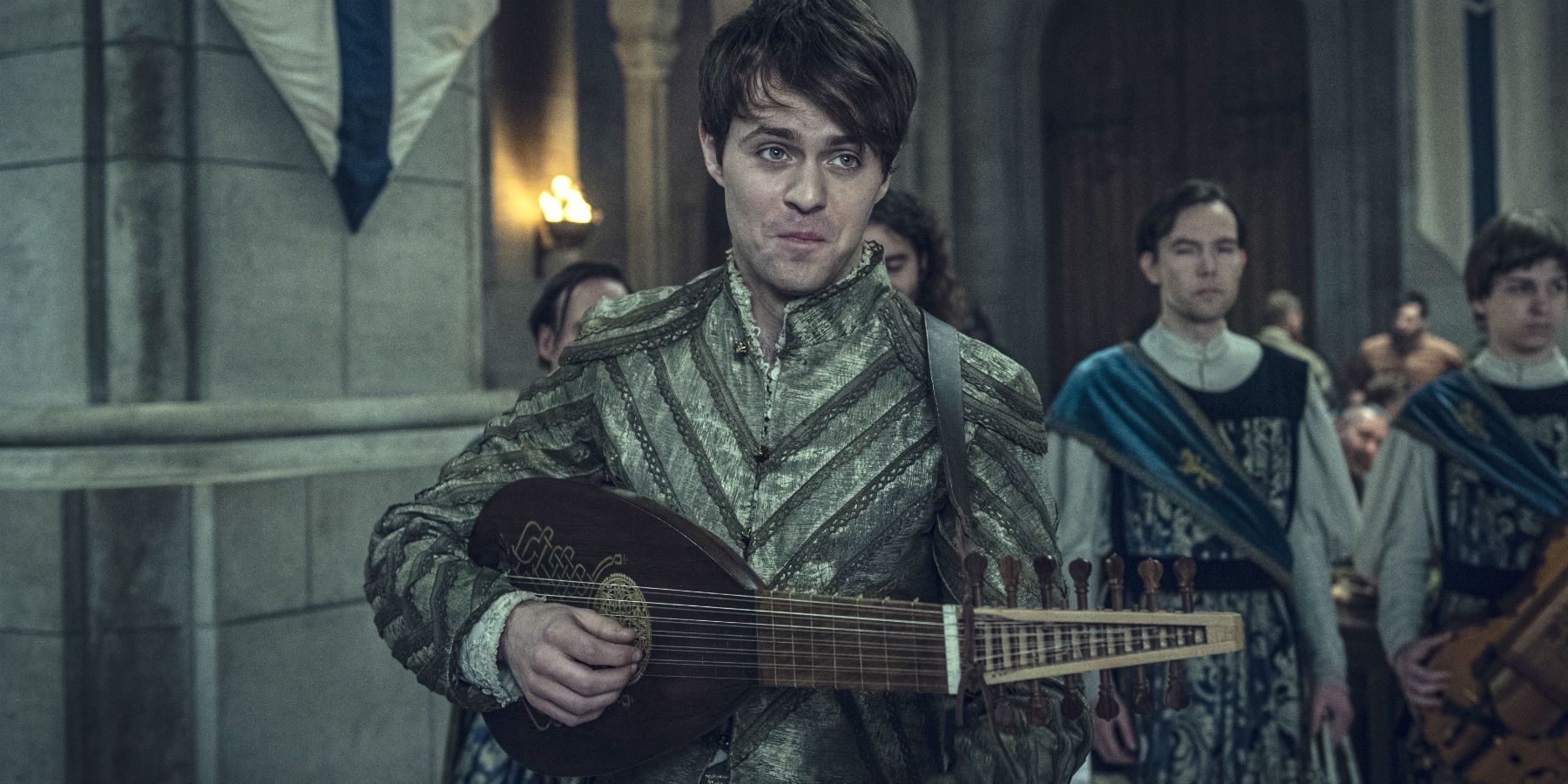
When it comes to inspiration for a Dungeons & Dragons campaign The Witcher series from Netflix has a lot to offer. For fans of the novels and video game series, it wasn't a surprise to see such a rich display of high fantasy on screen. The original works by Polish author Andrzej Sapkowski have garnered worldwide acclaim and are regarded to be in the same category as titles like Game Of Thrones. It's no wonder a Dungeon Master may want to incorporate aspects of such a rich setting in their D&D 5e campaign.
[Warning: Spoilers for The Witcher show below.]
The easiest way to incorporate The Witcher into a D&D campaign would be to simply use the setting itself. The players could then interact with the likes of Geralt of Rivia and adventure in The Great Kingdoms hunting monsters for coin. However, some DMs may want to create something more original, by making their own map and D&D setting that is simply inspired by The Witcher. The series gives a never-ending supply of inspiring moments and concepts to choose from.
As far as how the monsters in The Witcher translate to Dungeons & Dragons, that's the easy part. The Witcher is full of terrifying monsters and so is the Monster Manual. A ghost is a ghost and a witch is a witch at the end of the day. For other monsters, it's better to use something similar from the Monster Manual and relabel it. An example of this would be the Sylvan from Season 1, Episode 2 of The Witcher, as it's not represented directly in the D&D 5e Monster Manual. Using a Satyr Thorn Bearer's template and renaming it might be a good place to start for a DM. Then they can simply up the size category and change some of the stats to suit the need.

The lead protagonist of The Witcher series is Geralt of Rivia. For those who don't know the series, it's important to explain that he is a Witcher and what that means. Witcher candidates are taken as children and subjected to intense training, alchemical treatments and secret rituals. The Witchers are each students of different schools. Named for animals, there is even a Viper School, while Geralt himself is of the Wolf School. The end result is an extremely capable and feared monster hunter.
For a DM wanting to make a Witcher-type order in their D&D campaign setting, there is a lot to work with here. Secret orders and societies are nothing new to D&D 5e campaigns. A guild or order of monster hunters isn't that far-fetched either. Both could definitely work well in an evil D&D campaign. Maybe the order is dedicated to hunting a specific monster type that will be more prevalent in the campaign - like constructs, for example. For a more all-purpose hunter, there could be a unique set of schools based on the colors of chromatic dragons. It could also play into the group being outcasts as these dragons are typically evil but the order of hunters may not be.
As far as the Witchers themselves are concerned, that's a bit more difficult task to translate to D&D 5e. A more experienced DM could sit down and take the time to create a new custom playable class. If the Witcher-type characters are NPCs, then this makes things a little easier. In The Witcher series, before fighting monsters, Geralt typically drinks a small potion, his eyes go black and his powers are enhanced. The DM can simply create NPCs based on regular classes and add something like lycanthrope (and call it something else) to represent the transformation when the character downs the potion. A barbarian that can wear armor and gains some magic resistance is an even cheaper fix for this.

The Witcher series offers another special type of character in Yennefer of Vengerberg. Discovered at a young age for her innate magic ability she is bought and taken to Aretuza, a magic school for young girls. Once there, through a series of tough trials, she learns to tame her magic ability and becomes a very powerful sorceress. Sorcerers translate quite literally to D&D 5e and it wouldn't be too much of a reach for an interested group to seek out undiscovered talent via some sort of magical scrying.
Making these characters special in a D&D campaign, however, may depend entirely on the magic level and politics of the campaign setting. In the series, the students of Aretuza aren't unique in their magic ability as the setting itself is high magic. They are unique for their spell types. A DM could make his sorcerer students masters of a specific spell school such as illusion. What sets the women apart in The Witcher is that once they have completed their training they are assigned to cities and kingdoms as advisors. This idea could work well in a campaign where everyone in the party is a magic user.
Including something similar to Aretuza in a D&D campaign seems daunting, but in reality, it should be fairly straightforward. It's essentially just a very grim and brutal predecessor to Hogwarts. Aretuza is so brutal it turns its failed students into eels. Alternatively, putting a wizard's council in control of a city-state with an academy and secret rituals is very Aretuza-adjacent. A good way for a DM to replicate the trials of such a school in D&D is to have players fight monsters with a limited spell list. They should choose spells the players don't typically use and make them think outside of the box.

The Witcher series sees Geralt at the table and in the company of everyone from royalty to peasants. He's the quintessential D&D adventurer when it comes to the breadth of his interactions. Depending on what timeline is represented on screen, he's also either famous as himself or simply infamous for being a Witcher. This level of notoriety is something easily borrowed for a D&D 5e campaign. A party, be they experienced or not, could run into a lot of roleplay opportunities for being part of an infamous group of hunters.
The song "Toss A Coin To Your Witcher" from the bard Jaskier is one of the catchiest tunes in a fantasy series (maybe since the Game of Thrones intro). The tales and songs the bard spins for Geralt are something that a DM could incorporate into the game easily. Letting a party have a bit of notoriety is a double-edged sword, especially if they are a small D&D party and easily outnumbered. Some NPCs they come across will love them and some will not. Also, the characters they meet may have expectations the party just can't live up to. This puts them in quite a predicament and may make them have to think on their feet.
When creating a Dungeons & Dragons campaign inspired by The Witcher for 5e, there is a lot to choose from. A good thing for a DM to remember is that not everything is going to translate directly. Making as close of a "substitute" as possible, for a monster or character class may be the best thing. Getting a challenge rating or spell level wrong isn't the end of the world either. As long as the DM can adapt and the players are happy, any inclusion of fantastic Witcher imagery should be a win.
from ScreenRant - Feed https://ift.tt/3rvd4BW

No comments: